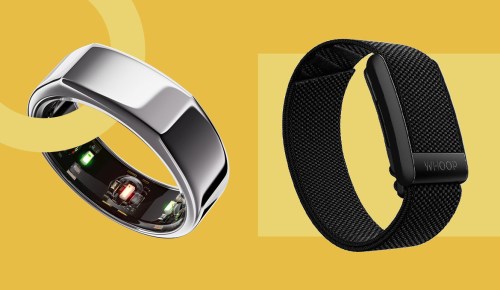I Switched to a Screen-Free Fitness Tracker, and It’s Making Me More Motivated and Less Distracted
Want to track your heart rate and steps without adding another screen to your life? You have options with a screen-free fitness tracker.

I don’t know about you, but the last thing I want when I’m on a hike or in the zone on a run is to get a series of dings and vibrations on my wrist—or even to think about the messages I’m missing. I am simply trying to move, people!
Experts in This Article
Research Assistant, Vision and Eye Institute at Angela Ruskin University
Sure, you can take the extra step to silence notifications on your smart watch. But you still know they’re there. Which feels like the price you have to pay for the benefits of owning a connected fitness device. Evidence shows that fitness trackers—specifically step counters—increase physical activity, after all. But we’re so inundated with screens in our lives that it’s worth thinking about whether we want to add another one to our wrists.
“Devices such as this have the potential to keep us plugged into the Matrix for longer periods when the overwhelming research says that unplugging is much better for our mental health,” says Mike Trott, a research assistant at Angela Ruskin University, who has studied the effects of screen time. Rather than totally doing away with the technology, however, a happy medium may be opting for a screen-free fitness tracker.
Personally, I’ve been using an Oura Ring Generation 3 for the past month or so, and I feel like I have the best of both worlds. I get to keep tabs on my fitness levels and get the motivation of meeting fitness goals. But I only check in with the companion app a couple times a day: First when I wake up to see how I slept (the Oura is best known as a sleep tracker, but in June, it added fitness tracking capabilities like continuous heart rate monitoring and more), once or twice when I want to log some exercise, and before bed to see how I’ve done on my goals.
Another option is the Whoop. Widely known as the most advanced fitness tracker on the market, it’s telling that the Whoop band doesn’t come with a screen: Its purpose, straight up, is to track, not distract. Worn by many professional athletes, you can track steps, heart rate, heart rate variability (HRV), and so much more with the Whoop. It also has an emphasis on how much strain you’re putting on your body, and what your recovery needs are.
Ultimately the decision to opt for a fitness tracker with (or without) a screen comes down to personal preference. So if you want to get in on the fitness tracking game, don’t let the fear of more screen time stop you. You’ve got options. Personally, I don’t see myself going back.
Sign Up for Our Daily Newsletter
Get all the latest in wellness, trends, food, fitness, beauty, and more delivered right to your inbox.
Got it, you've been added to our email list.










